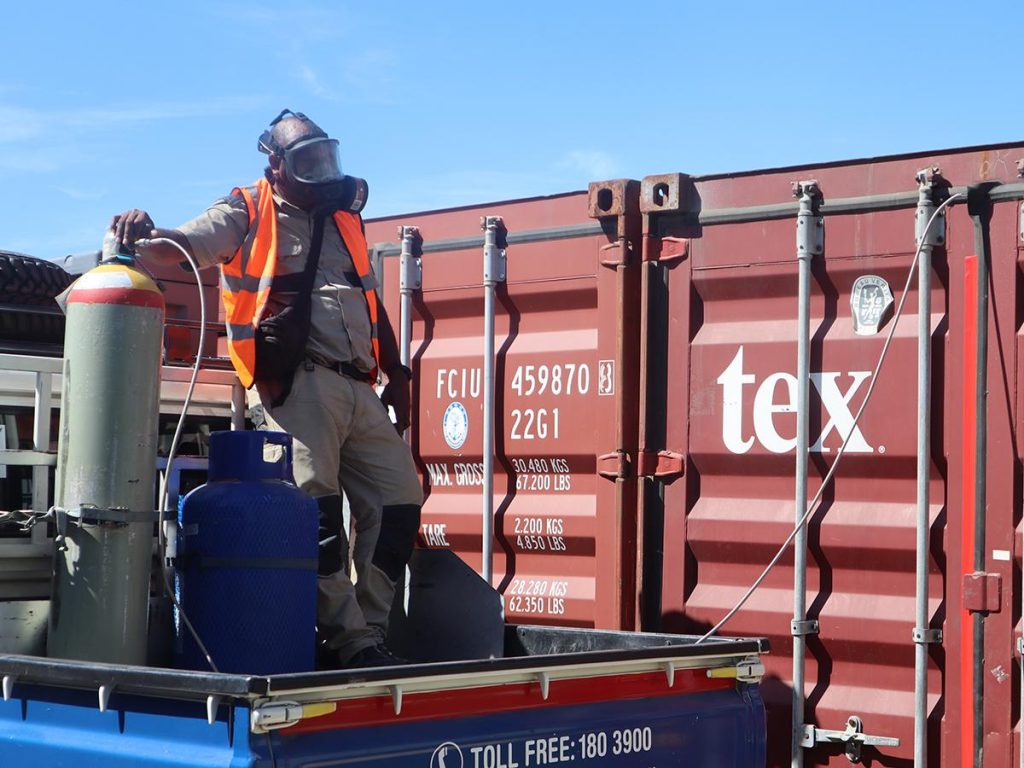
A fumigation certificate is issued by a certified pest control professional or fumigation service provider to confirm that a specified area, commodity, or shipment of goods has undergone a fumigation process. Fumigation is the process of pest control that involves the usage of gaseous pesticides to eliminate pests such as insects, rodents, and other organisms.
The Fumigation certificate mainly includes important information such as:
- Details of the fumigation process: This consists of the type of fumigant used, dosage rate of the fumigant, concentration, duration of exposure, container pressure test details, wrapping and timber details and other wanted details about the fumigation treatment.
- Date and time of fumigation: The certificate will specify when the fumigation took place, ensuring that it aligns with any quarantine or regulatory requirements.
- Location of fumigation: It indicates the exact location or area that underwent fumigation, whether it’s a structure, cargo container, or a specific area of a facility.
- Compliance with regulations: Fumigation certificates are usually required for international shipments, specifically for goods being transported across borders. The certificate acts as proof that the fumigation process obeys the relevant phytosanitary regulations of the importing country.
- Details of the fumigation service provider: This includes the name, company address, and contact information of the company responsible for conducting the fumigation.
Full Container Load (FCL) and Loose Container Load (LCL) are terminologies used in the exporting and logistics industry to describe various methods of transporting goods in containers. Fumigation may be applied to containers using either method to control pests.

Full Container Load (FCL) Method:
- In the Full container load method, the full shipping container is dedicated to a single shipper, and the container is full of that shipper’s goods.
- Fumigation in a full container load involves treating the entire goods of the sealed container. This makes sure that the fumigant reaches all parts of the cargo, to get rid of pests.
- Full container load is commonly used when a shipper has enough goods to fill a container or when the goods contain hazardous materials or items that need protection from external factors.
Loose Container Load (LCL) Method:
- In the loose container load method, multiple shippers share a single container. Goods from different shippers are packed in the container at a container freight station.
- Fumigation in Loose container loads involves treating only the specific goods that are decayed or ready to decay. This is performed at the container freight station.
- LCL is a cost-effective choice for shippers with smaller quantities of goods, as they share container space with other shippers.

In both Full Container Load and Loose Container Load methods, fumigation is performed to meet regulatory requirements and prevent the spread of pests across borders. The selection between FCL and LCL depends on factors such as the volume of goods, the nature of the cargo, and cost considerations. Fumigation agencies mostly charge Rs 1000-5000 per container for FCL and around Rs 500 per pallet for Loose Container Load shipments.
How to obtain a Fumigation Certificate to export from India?
To obtain a Fumigation Certificate, an exporter should follow the below-given procedure:
• An exporter must submit an application to the in-charge officer of the concerned Plant quarantine station at the designated port from where the goods will be exported.
• The Plant quarantine officer makes an appropriate amount of goods as a sample for lab testing.
• The provided goods samples are then tested. If any insect decay is found, then the exporter arranges fumigation of the cargo at an approved place by the fumigation in charge. The fumigation fees will be paid by the exporter.
• Post that, the Fumigation Certificate will be issued to the exporter.
